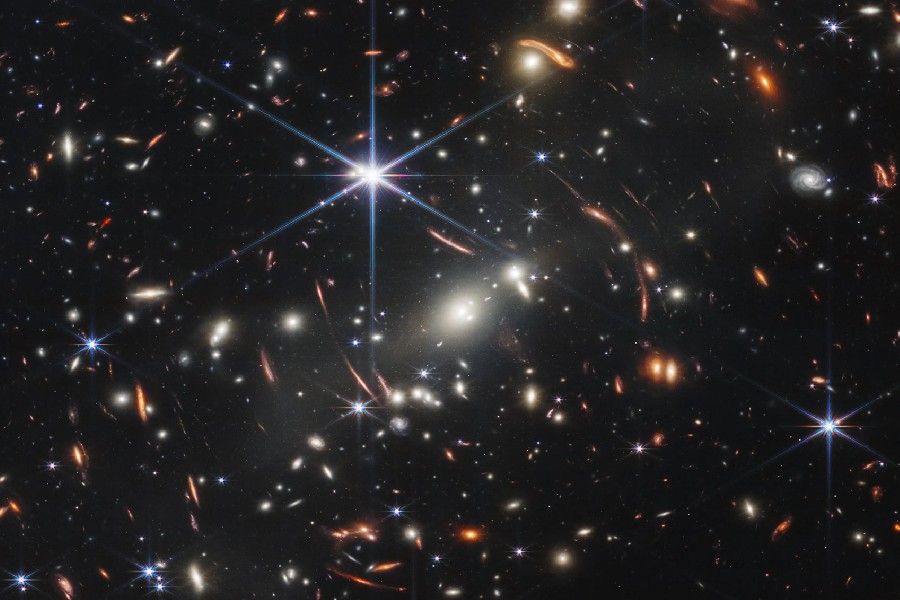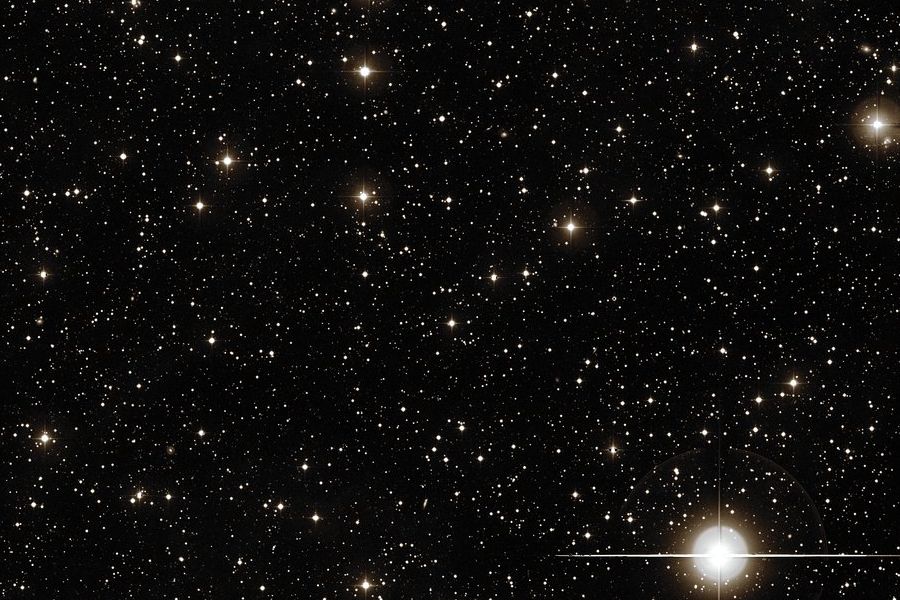Scattered across the far-reaching canvas of the cosmos exist galaxies of staggering diversity. Their forms glow with the combined illumination of billions of stars within each one. From majestic spirals like the Milky Way to the massive elliptical clusters, galaxies exhibit various sizes, shapes, and orientations. But how many different types of galaxies are there?
This stunning variety raises galactic questions – what underlying factors drive such structural plurality across galaxies? How did cosmic evolution shape them into such morphologically distinct types? Which type of galaxy is the most common?
So, we will explore the different types of galaxies that emerge from astronomy’s accumulating gaze across deeper dimensions of space and time. We will overview the principal categories and prototypical traits identified, from luminosity to galactic dynamics.

Types of Galaxies
Galaxies, the cosmic metropolises of the universe, display three primary types: Spirals, Ellipticals, and Irregulars. Spirals like the Andromeda Galaxy boast majestic arms spiraling from a central nucleus, featuring vibrant star-forming regions.
Ellipticals, in contrast, adopt a spherical shape, radiating a serene ambiance through aging stars. Moreover, irregular galaxies, like the Magellanic Clouds, defy symmetry, presenting chaotic and free-spirited forms often resulting from gravitational interactions.
Spirals: Cosmic pinwheels
The anatomy of a spiral
Spiral galaxies glow as cosmic pinwheels, with their signature winding arms stemming from a central bulge. These arms encircle a flat galactic disk that rotates in a delicate balance. These disks can span over 300,000 light years across, forming vast yet remarkably stable habitats for star formation.
Furthermore, differential rotation shears and propagates wave-like density enhancements through hydrogen gas and dust clouds. This process compresses molecular clouds into nebulae and births new stellar clusters. Also, theorized spiral density waves help maintain their elegant forms for billions of years.
Spiral arm architectures
The subclasses of spiral galaxies exhibit wondrous diversity in the intricacies of their arms. They can be grand or stubby, unwound or tightly bound, branched or straight as stellar streams. Some, like the Milky Way, contain a central bar structure from which two main arms unfurl.
Others spiral out directly from a central bulge. Hence, analyzing arm width, dust content, and pitch angle patterns grants insights into the role of gravity, turbulence, and feedback processes in cultivating cosmic blooms.
Spotlight on Andromeda
Our magnificent neighbor, the Andromeda Galaxy, exemplifies the grandeur possible for an enormous SB-classified spiral.
Its grand winding arms stem directly from a luminous, extended central bulge structure without a bar. Andromeda’s massive plane, which spans over 220,000 light years, provides intricate insights into the workings of spirals.
These insights range from its central supermassive black hole to intricate magnetic arms revealed through polarized dust analyses spanning over 100,000 light years. Its proximity provides an essential reference and promising features yet awaiting exploration.
Ellipticals: Serenity in Spheres
Gently curving stellar cities
Elliptical galaxies glow as smoothly curving agglomerations of stars. They range from tens of thousands to over a trillion suns densely packed within three-dimensional ovoid halos spanning 2,000 to over 500,000 light years.
Possessing very limited interstellar material, their atramentous expanses belie a remarkable uniformity. The galaxies’ triaxial dark matter distributions and frequent close encounters shape the near-circular stellar orbits.
Scales of elliptical islands
While giants like M87 anchor local galaxy clusters, ellipticals actually span a vast scale. Ultra-compact dwarf ellipticals, some just 100 light years across, suggest extremes of galaxy stripping.
Contrastingly, aptly named “giant” ellipticals classically reach diameters of up to 2 million light years. Their final stellar volume and diameters directly reflect complex past merger histories.
Together, they showcase unity in diversity. Remarkably consistent orbital dynamics and density profiles arising from heterogeneous formation events.
Insights into universal expansion
Observing elliptical galaxies grants valuable insights into cosmic expansion across vast spans. Since ellipticals largely lack ongoing star formation, modeling the aged populations of giant ellipticals enables “looking back” billions of years.
Contrasting current elemental abundances in these older composite systems against population ages verifies models of heavy element enrichment over time. This unlocks details about stellar life cycles from youthful galaxies long since evolved.

Irregulars: Cosmic Free Spirits
Defying symmetry
Irregular galaxies pulsate with scattershot star formation unsynchronized into steady waves or arms. Their asymmetric contours stand apart from the symmetry of spirals or ellipses.
This irregularity results from stirred gravitational interactions or vast halos of dark matter that are insufficient to settle the galaxies into more regular forms. This stochasticity grants them a creative license for spontaneous expression.
Origin stories: Gravitational interactions
Many irregular forms took shape through external gravitational tugs of war with larger galaxies, triggering accelerated star birth chain reactions.
Also, tidal forces stretch their clouds like cosmic taffy, enabling gas collapse. Ram pressure stripping can also blow their gas into disarray. Their irregularity leaves such disturbances written into their star city outskirts.
Dwarf Galaxies
Dwarf galaxies glow faintly with their muted stellar nurseries spanning thousands of light years wide. They rank among the most numerous galaxy types scattered about the cosmic web’s filamentary tendrils. Often, they orbit the fringes of prominent spirals and ellipticals.
Dwarfs’ shallow gravitational wells render them susceptible to external reshaping forces. Tidal encounters can spur short-lived fireworks of star formation that exhaust their gas reserves. So, these dim galaxies play a vital role in unpacking the structure of galaxy clusters.
Moreover, their distributions trace ancestral links between fragmenting primordial gas clouds from the early universe. Dwarfs also provide galactic building blocks – as larger galaxies cannibalize dwarfs, their stars help construct brilliant halo suburbs over time.
Lenticular Galaxies
Lenticular galaxies exhibit disk-like structures yet lack the spiral arms that define their cousins. Their bulges and disks appear smoothly connected, with older stellar populations dominating.
Lenticulars likely represent transitory objects. Galaxies shed their spiral patterns and star formation wanes after gas-disrupting galaxy mergers early on and subsequent near encounters. Their well-ordered rotational dynamic preserved during this metamorphosis contrasts the chaos of most mergers.

Peculiar Galaxies
Peculiar galaxies constitute catch-alls for the menagerie of cosmic oddballs that defy easy categorization. Their irregular, distorted, or asymmetric contours often signal dynamic formation histories still underway involving close gravitational encounters.
Colliding NGC 4038/9’s dramatic Antennae structure bridges two galaxies now embedded in a ring of debris from their overlap. Plus, Hoag’s Object sports a rare detached ring structure encircling a small round core like a cosmic bullseye. These astonishing exceptions illuminate mainstream ordering principles.
Active Galaxies
Active galaxies, unlike typical galaxies, exhibit prodigiously high energy emission. This emission, sometimes outshining the integrated starlight of their hosts, emerges from their nuclei rather than stars. These powerful cores contain supermassive black holes accreting spiraling gas from their surroundings.
Additionally, high-energy jets and ionized gas clouds result in radiating across the electromagnetic spectrum. These processes are classified as active galactic nuclei or quasars among the most distant known objects.
Quasars
Quasi-stellar radio sources, or “Quasars”, represent the extremely luminous subclass of active galactic nuclei. They are the oldest beacons in the cosmos, observable back approximately 14 billion light years. Rather than stars, these hyper-energetic cores of young galaxies contain rapidly accreting supermassive black holes.
These black holes reach up to 10 billion solar masses, powering jets that outshine their hosts. Quasars’ celestial light curves trace cosmic evolution back through the epoch of reionization when the universe emerged from its dark ages.
Blazars
The most extreme active galaxies, blazars, point their energetic jets toward us. They appear in telescopes as improbably bright objects dominating the cosmic luminosity hierarchy.
Their gamma-ray bursts and neutrino emission showcase matter-antimatter annihilation and charged particle acceleration near the speed of light. This extreme acceleration happens due to intense magnetic fields along the jets’ length.
Though transient, blazar flares’ incredible scale makes them visible across deep cosmological spans, lighting observations of universal expansion.
Conclusion
We explored delicate spirals spinning starry waves and elliptical giants brooding in sedate repose. We also observed lively, irregular streaking trails of stellar turbulence and dust-veiled lenticulars transitioning in cosmic metamorphosis.
Gaps remain in detail for identified types of galaxies. However, our models now cohere observations from the luminous urban beacons a hundred thousand light years wide to the ultra-faint dwarfs on the outskirts of galactic settlements.
Similar to the variety of shapes that galaxies may take on, the size and spectrum of their composite stars also vary, reflecting how people within a community maintain their uniqueness. As galaxies turn and transfigure throughout cosmic ages, we now recognize them as kindred cores made of common cosmic stuff, residents together in one great celestial city.
